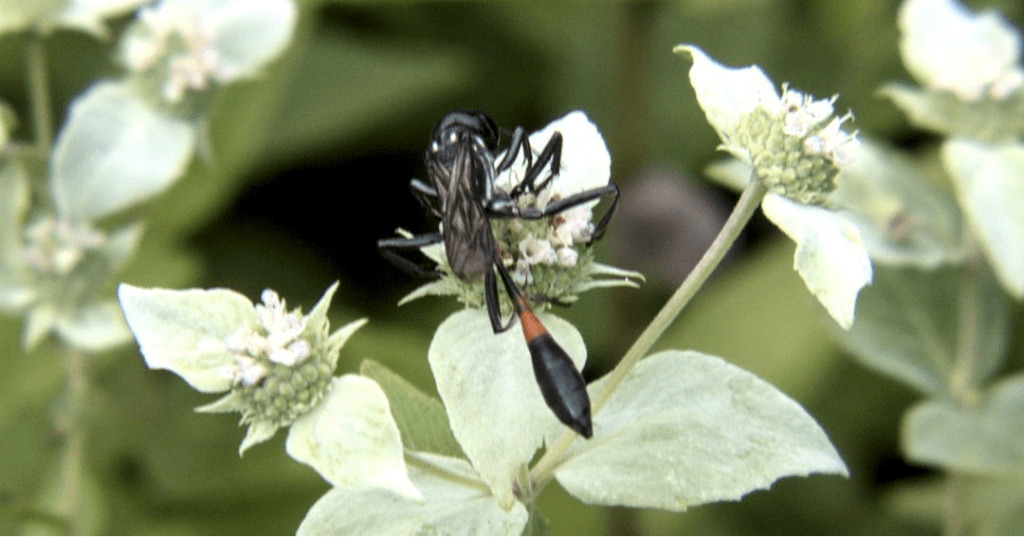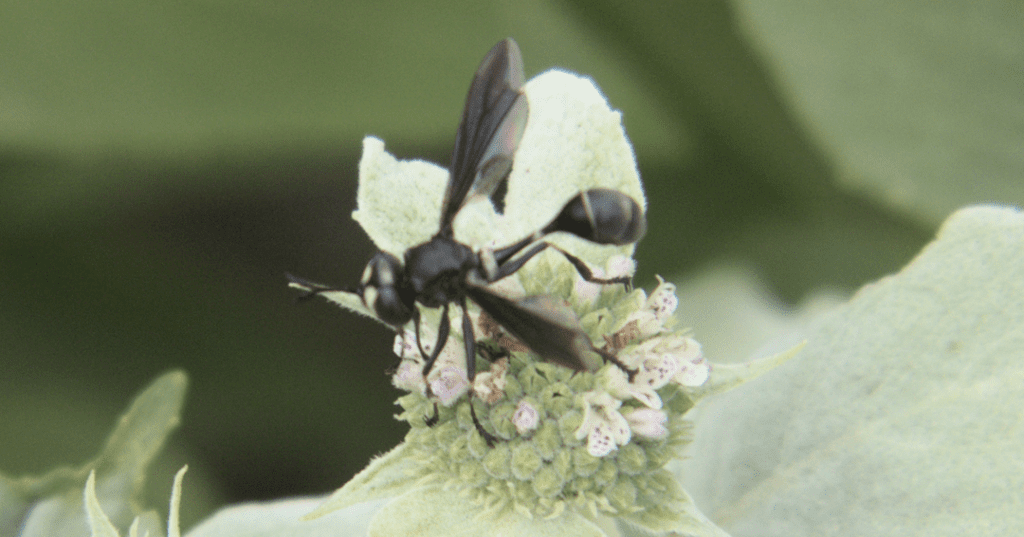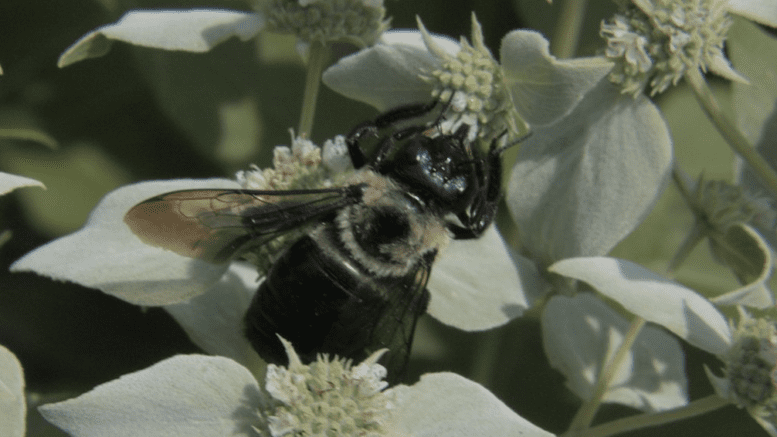Every few months during the summer I write some version of this same article, with different photos to showcase the newest arrivals to my metropolis of apian visitors. I also use the opportunity to improve my nature photography, and I think I’m getting better at it.

Each summer the bees, and wasps as well, return full force to the large stand of mountain mint in front of our home in Mableton when the flowers bloom.
Mountain mint is a plant native to Georgia and most of the North American east coast. There are 11 species, mostly growing in piedmont areas, but according to the Clemson Cooperative Extension at Clemson University the plant is also happy in coastal plains. I have no idea what species the field in front of our house is, but mountain mints are in the genus Pycnanthemum.
When it’s warm and sunny, the bees bring the cliche “busy as a bee” to life, swarming all over the flowers that attracted them.
To be honest I still don’t know very much about bees, but this season I bought a couple of field guides to help me learn how to recognize the common species, and teach myself about their life-cycle and habits.
What I do know about them is they love mountain mint.

Mountain mint is definitely in the mint family. You crush a leave and the smell is exactly like the non-native culinary herb often used in teas.
But it doesn’t look much like those low-growing imports from Europe and the Middle East. Mountain mint (at least the species in my yard) stands probably eighteen inches high on stiff stems, and has pointy leaves.
My patch of mountain mint covers a circular area about eight feet in diameter. There are two beauty berry plants in the center of the patch, but they are overwhelmed by the dense forest of mountain mint.
How I got my mountain mint
I got the mountain mint by accident.
In September of 2015 I went to one of the native plant garden work days at Heritage Park in Mableton (you can read about that particular work day by following this link).
One of the regulars from the Georgia Native Plant Society brought a pot containing two small beauty berry bushes and a few tiny mountain mint seedlings beneath them to offer to anyone who wanted them.
I took them mostly because of the beauty berry bushes, which true to their name have beautiful berries in the fall.
The mint was an afterthought, but I arranged them in the ground the same way they were in the pot, surrounding the beauty berry.
Within a year the mint was so tall that the beauty berry plants were struggling to compete for sunlight.
Then came the bees
At that point the bees start showing up in amazing numbers. All kinds of bees. Large bumble bees, honey bees, wasps and tiny bees I didn’t recognize. They were attracted to the shiny clusters of silvery flowers.
I expected butterflies to show up too, but while a few of them did arrive, they didn’t seem nearly as interested in mountain mint as the bees did.
A little about their behavior
While I come up to speed reading about bees (there are around 4,000 species of bees in the U.S. and 18,000 species of wasps) I’ve been observing their behavior.
Here are a few things I’ve noticed.
Bumble bees, which unlike honey bees are native to North America, are not shy. I can get my camera lens within inches of a bumble bee while it’s gathering, and it will ignore me.

Wasps (which I recently found out are not bees) are much more easily agitated, and I have to take the photos from further back and adjust the size of the photo digitally. I haven’t been stung yet, but I suspect if I do get stung it will be because I upset a wasp. There are a staggering number of wasp species worldwide, estimated at well over 100,000.
The most common wasp visitor to my mountain mint so far this year is the mud dauber, but both big wasps and tiny wasps in all sizes and colors show up.
Usually wasps have narrow waists, but the little “yellow jackets” that plague picnics are wasps, even though they are shaped much like honey bees.
All the bees and wasps like direct sunlight. While the bumble bees and honey bees in particular will gather while its cloudy, on sunny days they are swarming all around each other to get to the mint flowers.
So to wrap it up, I’ll probably report from my mountain mint again in four weeks or so, and it the meantime, if you like pollinators, you’ll love mountain mint.


Great plant, I had a post about it on my business Facebook page and I got comments about how much the bees love it! Mountain Mint was the Georgia Native Plant Society plant of the year 2020. They do t-shirts of each year’s plant. I wonder if they still have any Mountain Mint ones left over for you to wear when gardening.
I’ll check with them about the t-shirt. I’d love to have one.